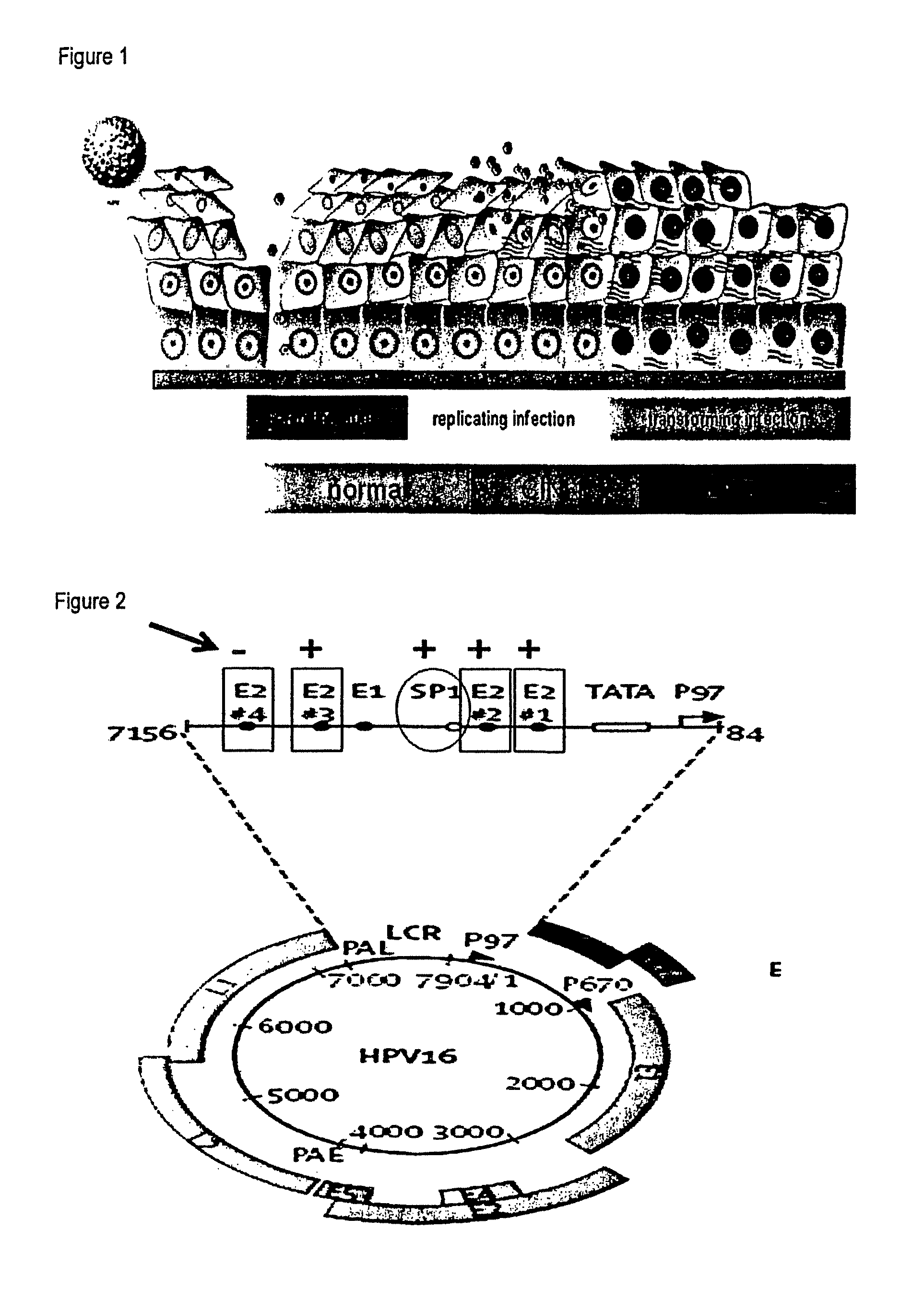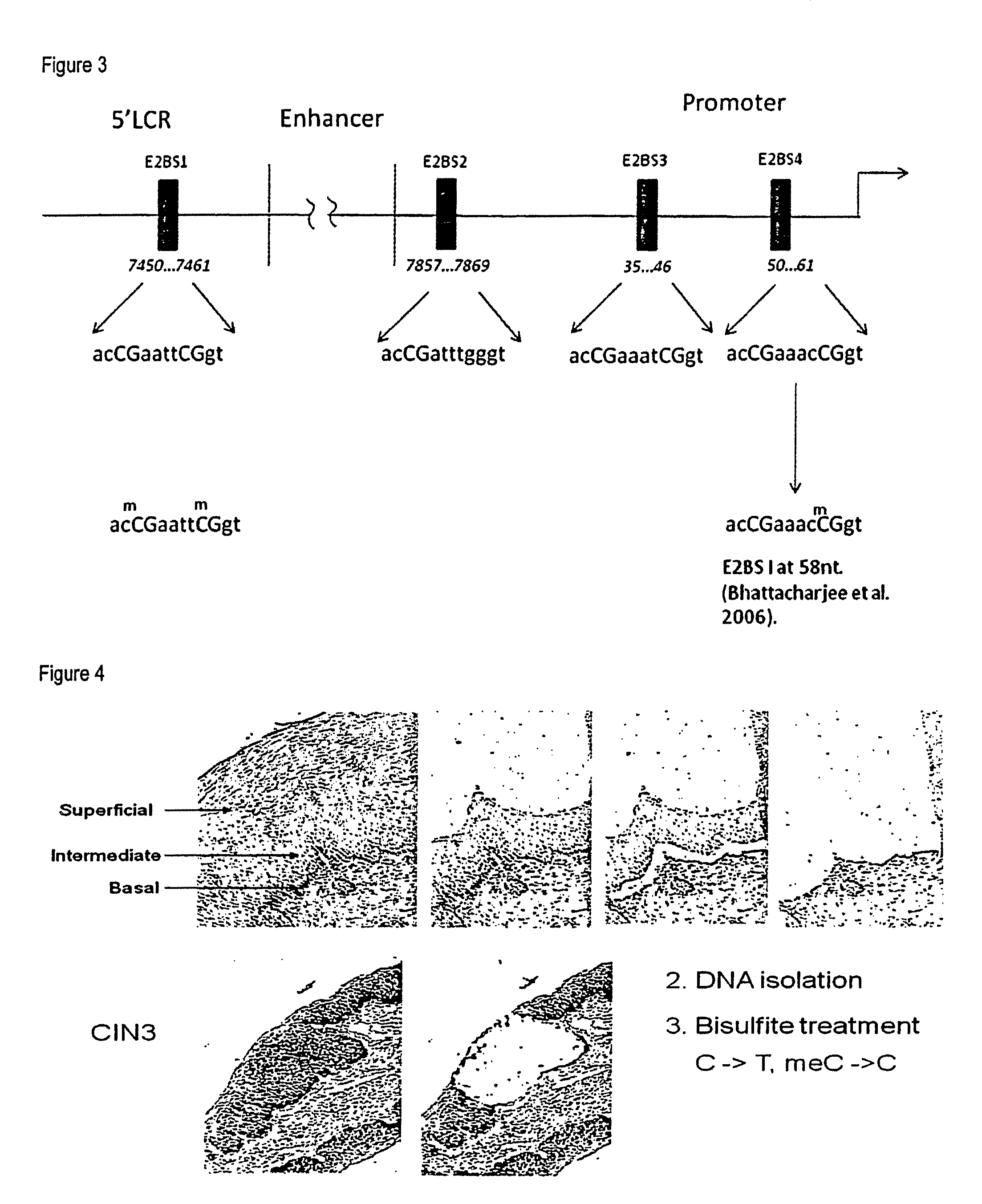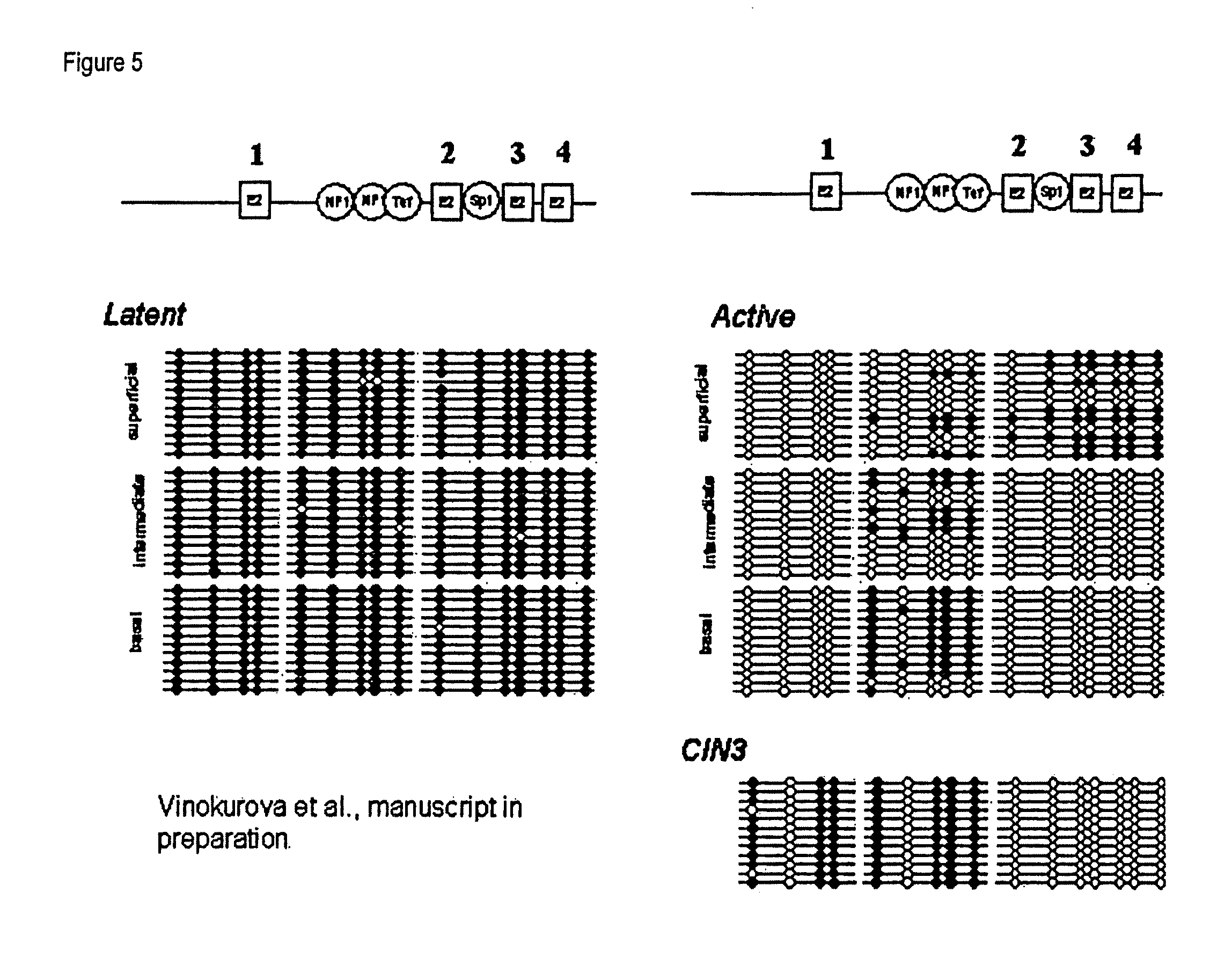Compounds and methods associated with differential methylation of human papilloma virus genomes in epithelial cells
a technology differential methylation, which is applied in the field of compound and method associated with differential methylation of human papilloma virus genomes in epithelial cells, can solve the problems of cell cycle arrest and eventually cell death, little or nothing is known about the molecular features, and all models so far do not allow explaining the details of differentiation dependent regulation of viral gene expression and replication. , to achieve the effect of treating and preventing hp
- Summary
- Abstract
- Description
- Claims
- Application Information
AI Technical Summary
Benefits of technology
Problems solved by technology
Method used
Image
Examples
example 1
Detection of Methylation Pattern
[0091]To investigate whether methylation of HPV 16 URR is influenced by differentiation status of the host epithelial cells, we analyze HPV16 DNA isolated from laser-microdissected normal epithelial cells with different degree of differentiation using bisulfite genomic sequencing (BGS).
[0092]The p97 HPV16 promoter in the basal cells derived from the normal epithelium as well as cell fractions from intermediate layer contained unmethylated CpGs. In contrast, HPV16 promoter in superficial layer enriched for differentiated cells was methylated, including CpGs within E2 (E2BSs 2,3 and 4) and SP1 binding sites. In the enhancer region we found decreased methylation of one CpG site (7454) in all differentiation stages. Thus, the other 4 CpGs (CpG) were heavily methylated in the basal cells but show a lower degree of methylation in the more differentiated cells. 5′ LCR region was hypomethylated in all differentiation stages.
[0093]We further compare the methyl...
example 2
Assessment of Diagnosis
[0095]101 samples (smears and punch biopsies), which are derived from cytologically and histologically confirmed low-grade (LSIL, n=53) and high-grade (HSIL, n=48) lesions infected with HPV16 are tested for the presence of the E2BS1 methylation by combined bisulfite restriction analysis (COBRA).
[0096]The detection of the specific LCR HPV16 methylation provides a molecular marker for detecting pre-cancerous lesions with high risk for cancer progression.
[0097]
TABLE 3E2BS1 methylation,Sample N(%)LSIL5312 (22.6)HSIL4836 (75)
[0098]Methylation of E2BS1 was present in 75% high-grade lesions but only in 22.6% of low grade intraepithelial lesions. Thus, the detection of the specific LCR HPV16 methylation may provide a molecular marker for detecting pre-cancerous lesions with high risk for cancer progression.
[0099]To verify whether E2 binding to E2BS1 is responsible for the activation of the p97 promoter we analyzed the effect of E2BS1 methylation on the activity of P...
example 3
Therapeutic Application of 5′ Azacytidine in Cell Culture
[0101]The impact of treatment with epigenetic inhibitors (demethylation agents) on the activity of the p97 promoter is assessed using luciferase assay. Normal human keratinocytes transfected with the reporter plasmid LCR16_Luc, which contains the complete LCR fragment of the HPV-16 cloned in front of the luciferase gene were grown to about 50-60% confluence. Cells were treated with 2 μM and 4 μM 5-azacytidin for 24 and 72 hs. The addition of 5-azacytidine to the cells decreased the activity of the early p97 promoter in a dose dependent manner.
[0102]As shown in FIG. 9, when undifferentiated or differentiated cells were treated with 2 μM 5-azacytidin, the p97 promoter activity was reduced to 40-60%). In both cells treated with 4 μM 5′-Azacytidin, the promoter activity was significantly reduced to the basal level.
[0103]These data show that application of 5-aza-cytidine as an example for a demethylating agent results in substantia...
PUM
| Property | Measurement | Unit |
|---|---|---|
| time | aaaaa | aaaaa |
| affinity | aaaaa | aaaaa |
| frequencies | aaaaa | aaaaa |
Abstract
Description
Claims
Application Information
 Login to View More
Login to View More - R&D
- Intellectual Property
- Life Sciences
- Materials
- Tech Scout
- Unparalleled Data Quality
- Higher Quality Content
- 60% Fewer Hallucinations
Browse by: Latest US Patents, China's latest patents, Technical Efficacy Thesaurus, Application Domain, Technology Topic, Popular Technical Reports.
© 2025 PatSnap. All rights reserved.Legal|Privacy policy|Modern Slavery Act Transparency Statement|Sitemap|About US| Contact US: help@patsnap.com



